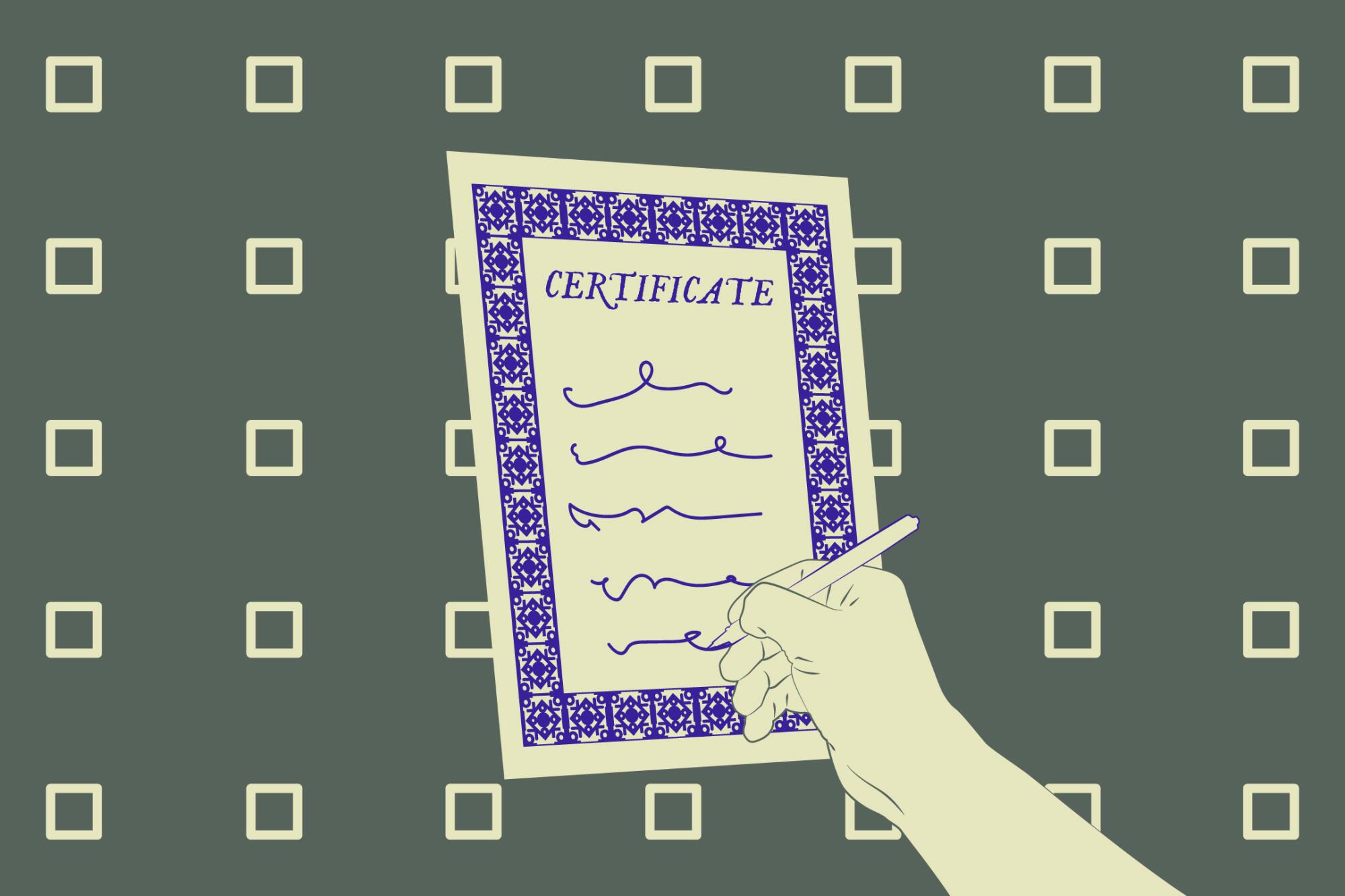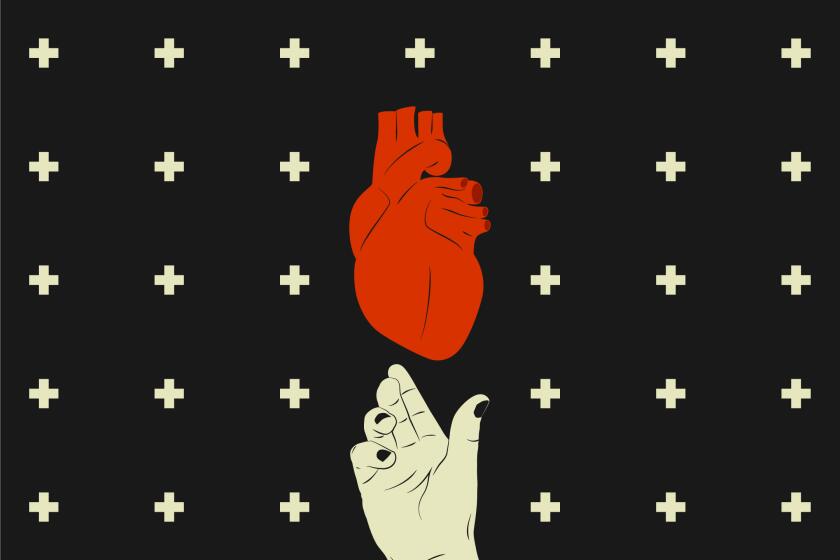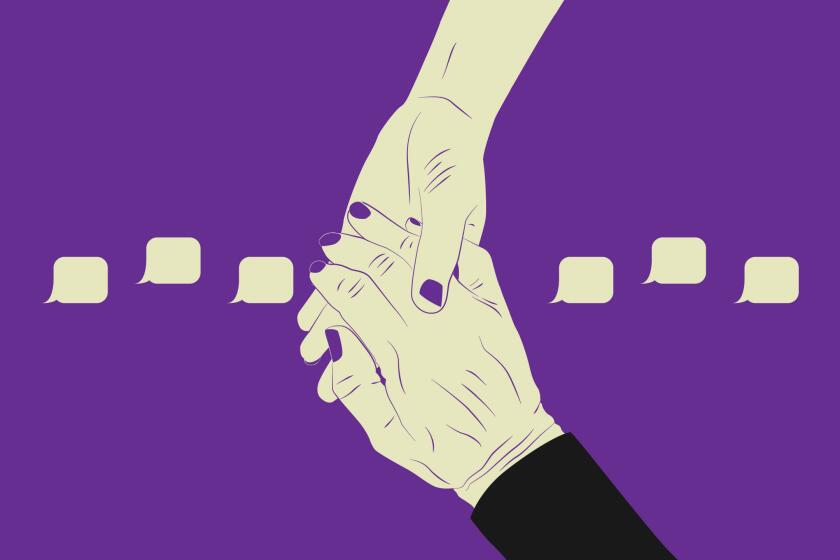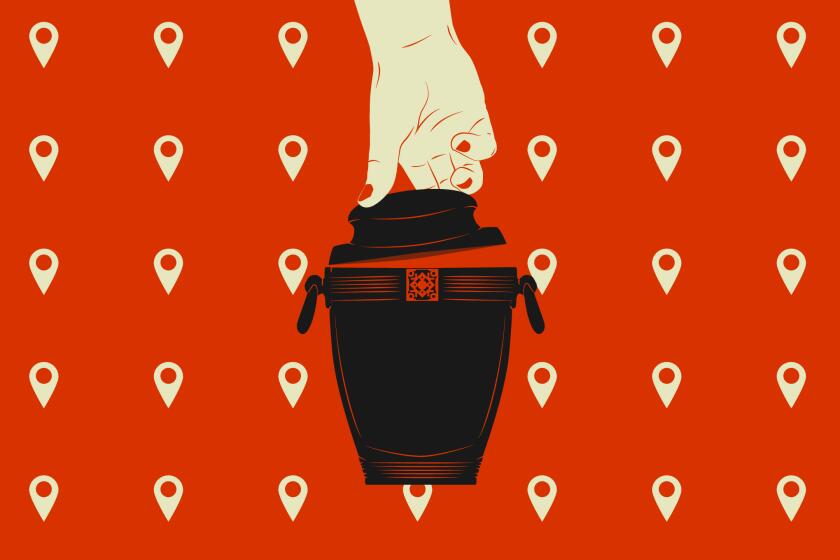
- Share via
When someone close to you dies unexpectedly, you’ll feel an avalanche of emotion. And on top of it all, you’ll have the responsibility of planning a funeral, notifying others of the death and resolving any lingering duties or financial commitments.
So where do you start?
Here’s a checklist of the basic steps to follow in the event of a sudden death of your spouse, parents or others for whom you are the main survivor.
It’s worth remembering, though, that you don’t have to take this on alone. This process can be overwhelming and difficult, so if family members and friends offer help, take it. And if you need help processing the loss from someone who’s outside of your inner circle, here’s how to find mental health professionals you can trust.
What to do in the first few days
Arrange for a death certificate. This is the legal record of the death, filed with county officials and the California Department of Public Health’s electronic registry. You’ll need it for funeral arrangements and life insurance claims, for example.
Under state law, the attending physician is generally the one required to fill out the necessary medical information and sign the certificate, and the funeral director is the one who submits it to the registry. But they may need your help to fill out the sections of the certificate with personal information about the deceased, including age, usual occupation, highest level of education attained, and mother and father’s names.
If the death occurred at a hospital or other medical facility, you can count on the doctors there to handle this paperwork. But if it occurred at home, AARP says, call 911, and the police and paramedics will conduct an investigation and make a declaration of death. The medical team will help you decide whether an autopsy is needed by the L.A. County Medical Examiner-Coroner or if you should go ahead and call a funeral home.
If the deceased wanted to be an organ donor, you may have trouble fulfilling that wish. Vital organs that are cut off from a supply of oxygenated blood for more than 20 to 30 minutes are no longer suitable for transplants, said Thomas Mone of OneLegacy in Azusa, the largest organ procurement organization in the United States. That’s why the only feasible donors are a small percentage of people who die in a hospital while on a ventilator, he said.
Hospitals are required by law to notify the local organ procurement organization when they have a dying patient who may be a potential donor. If your loved one registered as a donor, that choice can’t be overridden. If not, the survivors will need to make the decision on your loved one’s behalf.
About half the U.S. population, including 18 million Californians, are registered organ donors. But whether you can actually donate organs depends on how you die, among other limiting factors.
Reach out to the deceased’s community. You’ll need to notify the deceased’s family and friends of the person’s death. If there isn’t already a list of people who need to be notified, AARP and the National Institute on Aging suggest that you make a list and call, text or email — whatever you feel most comfortable doing.
How you communicate depends on each person’s circumstances before and after the death, said Joanne Weingarten, Our House Grief Support Center’s senior clinical coordinator of adult programs. For example, if the survivor is a single parent or an adult child, consider the responsibilities they have and how they grieve.
Weingarten says there isn’t a right or wrong way to notify people. She said you might want to call your friends and family, but write a social media post to inform people outside that circle.
If you do make a phone call and it’s someone you think might have a strong reaction, make sure they’re not driving. You might hold off telling them until someone else is around who can support them.
If you don’t have the capacity to make phone calls, ask yourself if there’s someone in your life whom you can trust to make the calls for you.
Ask the people you’re notifying to spread the word to others connected to the deceased, said AARP. If they were a part of the same club, church group or workplace, they can help let others know.
There are also a couple of avenues for notifying people online and in print. You can announce a person’s death on social media. Families also publish obituaries and death notices either online, in a newspaper or both. An obituary includes all the tributes that families and their funeral homes write about their loved ones, said Stephen Segal, senior content director at Legacy.com, which publishes obituaries online and partners with local newspapers to make submitting an obituary easier.
“On the other hand, most people today use the term ‘death notice’ to mean a very short, just-the-facts announcement of the person’s death and funeral details,” Segal said.
An online obituary is fast and simple to share.
“It provides a permanent online sympathy space where people can share their own memories, condolences and messages,” he said.
Publishing an obituary in the local newspaper is the best way to reach all the neighbors, colleagues, old classmates and other hometown folks, Segal said.
What do you do when someone dies?
Because we find death so hard to talk about, there are probably lots of things people wonder but don’t know. We have answers.
An obituary can be brief or long, depending on what the family prefers. There are six essential things obituaries include, according to Legacy.com.
- Announcement of death. What was their full name? What town did they live in? How old were they? Where and when did they die? And, if you’re comfortable sharing, what was the cause of death?
- Life story. What are meaningful things about the person being remembered. Where did they grow up? Where did they go to school/work/church? What groups did they belong to? What did they care about? What will their loved ones miss most?
- List of family members. What close family members survive them, and which died previously? Traditionally, obituaries include spouses or partners, parents, children, siblings, grandparents and grandchildren. It’s OK to include other close loved ones too, even if they were not blood relatives.
- Funeral information. Will there be public or private memorial services? Include the dates, times and locations of any planned events, and include the name of the funeral home so anyone can contact them with questions.
- Sympathy preferences. Where should cards and flowers be sent, and are there any charitable donations the family would like to suggest?
- A photo. A closeup of your loved one’s face usually works best. It can be a recent photo or one from their youth — or, if possible, include both.
However you do this step, Weingarten said, remember that there isn’t a timeline and that you don’t owe anyone anything.
“In those moments, it’s really about taking care of yourself or your inner circle, especially if they’re elderly or young children who need extra support and attention,” she said.
“And then of course, trying to take care of yourself because in those early days, it’s about survival for many people.”
Make funeral arrangements. The first step is figuring out whether the deceased had made plans for a funeral. If so, you’ll need to find those plans — the family’s attorney may be able to help on that front. An untimely death could leave you with zero planning, so talk with family members about how to honor that person.
Talking about burial arrangements or end-of-life care isn’t the easiest conversation to have with family members. But it can be done with respect, humility and love.
What to do within the first few weeks
Get copies of the death certificate. You’ll need them to file insurance claims, cancel credit cards and close financial accounts. If the deceased person’s remains are in L.A. County, contact the county Department of Public Health’s Vital Records office for a copy of the death certificate.
The permit application requires the deceased’s full name, date of birth, date of death, city of death, and county or state of birth if the death occurred outside of California. The certificate costs $24, and paperwork for the certificate can be processed by mail or in person.
Locate a will (if there is one). If you know that the deceased had a will but you don’t know where it is, AARP suggests looking for it in a desk, a safe-deposit box or wherever the person kept important papers.
For the record:
12:33 p.m. May 19, 2023An earlier version of this article misstated the maximum value of small estates for probate purposes as $166,250. For deaths on or after April 1, 2022, the maximum small-estate value is $184,500.
A will is a set of instructions that will guide what happens to the deceased’s estate — that is, that person’s assets and debts. It will typically include the name of an executor, who will have the power to take actions and make decisions on the estate’s behalf. If there is no executor, or if the executor is unable or unwilling to carry out the responsibilities, the duties will be handled either by an administrator named by a probate judge or, in the case of small estates worth no more than $184,500, a close relative acting as an informal representative.
Unless the deceased person had a small estate, a probate court will have to oversee the distribution of at least some of the assets, with or without a will. You can find a number of do-it-yourself guides to probate online, or you can hire an attorney who specializes in probate.
L.A. is a complicated place to live. Does it have to be such a complicated place to scatter ashes after someone dies?
Identify beneficiaries. If your loved one had named a beneficiary or beneficiaries for insurance policies, retirement funds and bank accounts, those assets can be paid out or transferred directly without waiting for probate. The same is true for any accounts that the person had designated as “payable upon death,” as well as any accounts jointly held or property owned as joint tenants.
One other, less common asset that doesn’t have to go through probate is a living trust. Anything in the trust will be transferred automatically to the trust’s beneficiaries.
Stop Social Security payments. Although surviving spouses and, in some instances, children can receive survivors benefits, any benefits paid to the deceased person in the month of death and thereafter must be returned, the Social Security Administration advises. That’s why it’s vital to make sure the death is reported to the SSA.
“In most cases, the funeral home will report the person’s death to us,” the SSA says on its website. “You should give the funeral home the deceased person’s Social Security number if you want them to make the report.”
But don’t stop there. The SSA and the National Institute on Aging recommend that you get in touch with the Social Security Administration to make sure the death has been reported and apply for survivors benefits, if you are entitled to them. To do so, you’ll need to call (800) 772-1213 (TTY: 1-800-325-0778) on a weekday; according to the SSA, you cannot report a death or apply for survivors benefits online.
Contact financial institutions and insurers. Notifying credit reporting agencies of the person’s death will help prevent identity theft. Call the major ones — Equifax, Experian and TransUnion — and ask how to submit a copy of the death certificate.
If the person had life insurance, reach out to the insurer to report the death and have the beneficiaries paid. You’ll need a copy of the death certificate for this process as well.
You’ll want to cancel the credit cards that were solely in the deceased person’s name, but don’t pay any amounts due at this time; according to Bankrate.com, the estate will be responsible for the unpaid balance, if there is one. For joint accounts, the balance becomes the responsibility of any surviving account holder.
Call the customer service number on the back of each of the person’s credit cards and ask for “deceased account services” or the “estate unit,” Bankrate advises. You may need to submit a copy of the death certificate, but many card issuers do not require one.
Checking and savings accounts are a bit more complicated. If they are joint accounts, the surviving person on the account retains control after the death. If they were individual accounts with a named beneficiary (as in a “payable upon death” designation), then the funds will flow straight to the beneficiary once the bank is formally notified of the death, a step that may require a copy of the death certificate. If they were individual accounts without a named beneficiary, notifying the bank about the death will freeze the funds, but the executor or administrator of the estate (or representative, if it’s a small estate) will have to get involved to distribute the money.
People are choosing eco-friendly and creative options for their final resting places, including the bottom of the ocean and miles and miles into outer space.
Make a list of accounts to cancel or remove. We live in a time of subscriptions for streaming entertainment, digital news, boxed meals and curated clothing. Those all need to be canceled. The mundane monthly utility bills need to be canceled as well.
Unless the deceased left a list of accounts along with the corresponding account name and password, you’re going to have to do some digging and make several phone calls. If you have access to the deceased person’s credit and debit card account statements, you can look for monthly charges there. Failing that, multiple websites offer lists of subscription services and other common sources of monthly bills — for example, see this one from an online urn seller.
In case you’re hoping for a shortcut to this process, canceling a credit card won’t stop the monthly charges on that account from being assessed and potentially running up bills for the estate. You’ll need to address the sources of those charges separately.
Cancel the driver’s license. AARP urges you not to forget to cancel the deceased driver’s license to prevent identity theft. Go to the DMV website to see its list of required documents for the cancellation process.
Notify the Postal Service. You can stop mail from being sent to the deceased’s registered address. The U.S. Postal Service advises you go into your local post office to learn how to file a proper request to either stop or redirect mail, as well as remove the deceased from advertising lists.
Cancel the person’s voter registration. The application to request the cancellation of a deceased voter’s registration is on the Los Angeles County clerk’s website. Or you can call (800) 815-2666 and choose option 2.
About The Times Utility Journalism Team
This article is from The Times’ Utility Journalism Team. Our mission is to be essential to the lives of Southern Californians by publishing information that solves problems, answers questions and helps with decision making. We serve audiences in and around Los Angeles — including current Times subscribers and diverse communities that haven’t historically had their needs met by our coverage.
How can we be useful to you and your community? Email utility (at) latimes.com or one of our journalists: Jon Healey, Ada Tseng, Jessica Roy and Karen Garcia.
More to Read
Sign up for The Wild
We’ll help you find the best places to hike, bike and run, as well as the perfect silent spots for meditation and yoga.
You may occasionally receive promotional content from the Los Angeles Times.
















